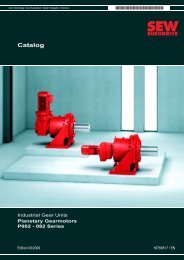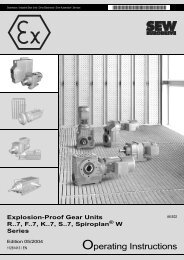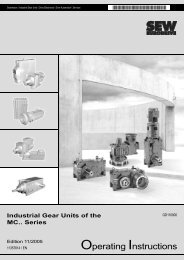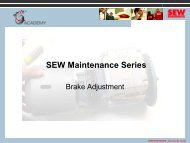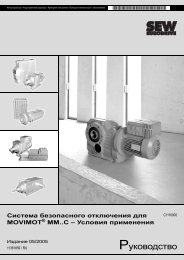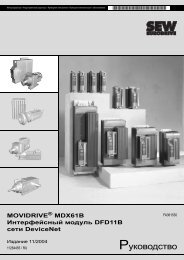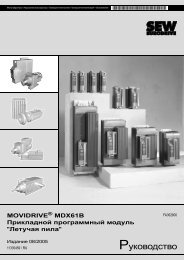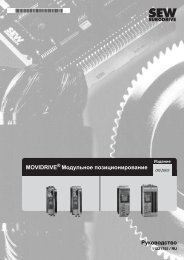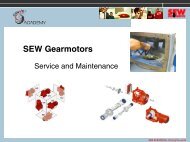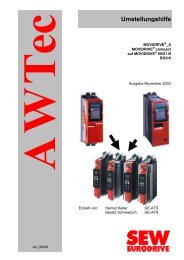Operator Terminal System Manual - 11276916.pdf
Operator Terminal System Manual - 11276916.pdf
Operator Terminal System Manual - 11276916.pdf
Create successful ePaper yourself
Turn your PDF publications into a flip-book with our unique Google optimized e-Paper software.
<strong>System</strong> <strong>Manual</strong> – DOP11A <strong>Operator</strong> <strong>Terminal</strong>s<br />
Network Functions and Communication<br />
Communication<br />
I/O cross reference The [I/O cross reference] function for displaying an overview of I/Os can be used both<br />
for controller 1 and controller 2. The cross reference indicates the preset controller.<br />
Name list Controller 1 and controller 2 support the name list with all associated functions.<br />
Data exchange<br />
between<br />
controllers<br />
If communication is interrupted by one controller, the terminal will continue communication<br />
with the other controller. The terminal will attempt to reestablish the interrupted<br />
communication with the controller every 10 seconds. As the communication with the<br />
connected system may be affected, you can change the interval using a command. See<br />
section "Commands" in chapter 7.3.<br />
When the terminal is connected to two controllers (two drivers in the terminal), data can<br />
be exchanged between the two controllers (analog and digital signals). You can also<br />
connect two controllers via separate terminals in a BDTP network.<br />
The signal type need not be identical in the two controllers. Data are exchanged via a<br />
virtual data channel between controller 1 and controller 2. You can define eight different<br />
data channels. Data exchange can be time controlled or based on events. You define<br />
the conditions for the exchange of data as well as for the signal intervals for each data<br />
channel under [Functions/ [Data exchange].<br />
Parameter Description<br />
Area Start I/O 1 Start address for the data channel for controller 1. (The subsequent<br />
field is used for specifying possible index registers and<br />
signal formats.)<br />
Start I/O 2 Start address for the data channel for controller 2. (The subsequent<br />
field is used for specifying possible index registers and<br />
signal formats.)<br />
Mode Specify whether the signals for the data channel are analog or digital signals.<br />
Size Specify the number of signals to be transferred in the data channel (start address +<br />
subsequent). The maximum number of signals for a data channel is 255.<br />
Flow 1 → 2 Trigg signal Digital trigger signal that controls the data exchange for the data<br />
channel from controller 1 to controller 2.<br />
Meaning of the signal status:<br />
0 Inactive<br />
1 Transfer<br />
The terminal deactivates the signal after successful transfer.<br />
Interval Indicates the time in seconds that elapses between cyclic transfers<br />
in the data channel.<br />
Set the interval parameter to zero if there is no cyclic transfer.<br />
When the value is higher than zero (1), the parameter has priority<br />
over the trigger signal. In this case, a trigger signal will not be able<br />
to initiate a transfer.<br />
The maximum number of seconds is 65535.<br />
9<br />
221



